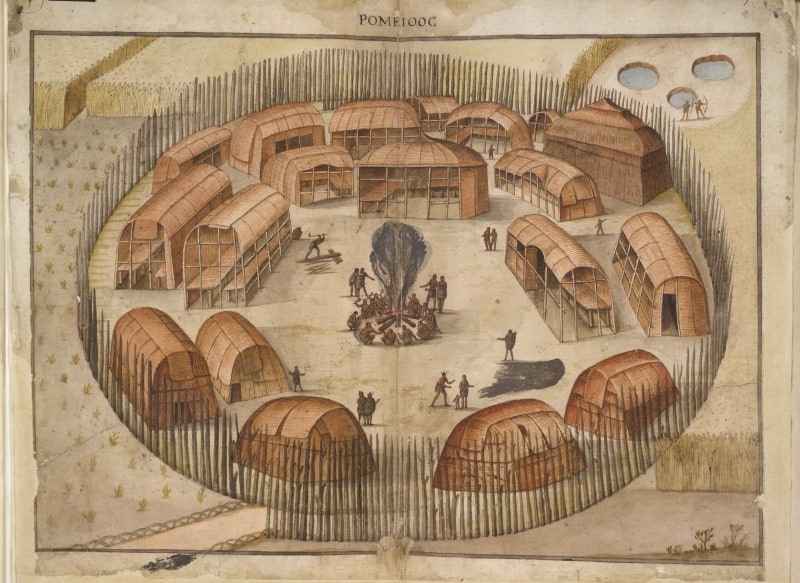Ghost River: Back to School
In last month’s post, I discussed the Teacher Seminar we conducted in collaboration with the McNeil Center for Early American Studies and the Gilder Lehrman Institute of American History. Today, I want to highlight a concrete outcome from our weeklong institute: 10 new lesson plans that are available right now on Digital Paxton. You can access all ten lessons here.
Certainly, we have more work yet to do. We’re still producing several lessons, and I would like to create a more pleasing pathway for these lessons. However, at this moment, I think it’s appropriate to take a step back and acknowledge the truly superb work these educators have done using Digital Paxton and Ghost River: The Fall and Rise of the Conestoga. Below, you will find brief descriptions of each lesson, arranged roughly by grade level.
“Ghost River Meets the Spirits of the Conestoga,” LéAnn Murphy Cassidy
Grade Level: 6-8
This multi-part lesson focuses on the theme of historical continuity and change through the analysis of primary and secondary sources related to the Conestoga massacres (1763).
The belt of wampum delivered by the Indians to William Penn at the “Great Treaty” under the Elm Tree at Shackamoxon in 1682. “Not Sworn to and never Broken.” [graphic] : Presented by Granville John Penn Esq of England / F. Bourquin & Co., lith.
“Wampum Tells a Story,” Jacqueline Dukes
Grade Level: 6-8
This two-part lesson asks students to consider wampum belt as historical, political, and symbolic meaningful objects in relation to the Ghost River: The Fall and Rise of the Conestoga.
“Listening for Voices: The Fall and Rise of the Conestoga,” Donna Sharer
Grade Level: 6-11
This unit introduces students to the massacre of the Conestoga people in Pennsylvania (1763) through the examination of related primary sources and a close reading of Ghost River: The Fall and Rise of the Conestoga.
“Interpreting Conflict through Political Cartoons,” Peter Gaynor
Grade Level: 8
This lesson examines the An Indian Squaw King Wampum Spies political cartoon and then extrapolates the schisms between the Paxton Boys, Native Peoples, and Pennsylvania Government, and by extension British Crown.
John White, “Indian Village of Pomeiooc” (1585-1586), British Museum.
“Murder, Theft and Silence: The Conestoga Massacre,” Mark Stetina
Grade Level: 8-9
This lesson covers the events, interpretations, and perspectives about the murder of the Conestoga Indians in 1763, the theft of their land, and ensuing pamphlet war in colonial Philadelphia.
“Early Encounters: Treaty Protocols and the Significance of Wampum,” Maria Adamson
Grade Level: 9-12
This lesson complicates students’ understandings of the power dynamics between native groups, settler colonists and European empires during the colonial period.
“Neolin and Pontiac’s Rebellion,” Jenn Androsky
Grade Level: 9-12 AP US History
This lesson focuses on the Neolin Prophetic Vision in order to introduce the events that preceded the Paxton Boys’ massacres and to help students understand the context of the massacres.
Draughts of the Proprietary Manors in the Province of Pennsylvania (“Conestogoe Mannor”)
“Portrayal and Popular Opinion,” Weston Stephens
Grade Level: 10
This lesson asks students to consider how portrayals of Algonquians shaped popular opinion.
“Revisiting the Massacre at Lancaster,” Paul R. Clementi
Grade Level: 10-12 AP US History
The lesson asks students to source Massacre of the Indians in Lancaster (1841) in contexts of both 1763 and 1841.
“The Ghosts of Wampum,” Ernestine Heldring, Will Fenton
Grade Level: 11
This lesson asks students to compare and contrast the representation of wampum in different types of historical sources to analyze the gap in understanding of reciprocity between the settler colonists and the Conestoga people from different historical perspectives.
Redrawing History: Indigenous Perspectives on Colonial America has been supported by The Pew Center for Arts & Heritage.






